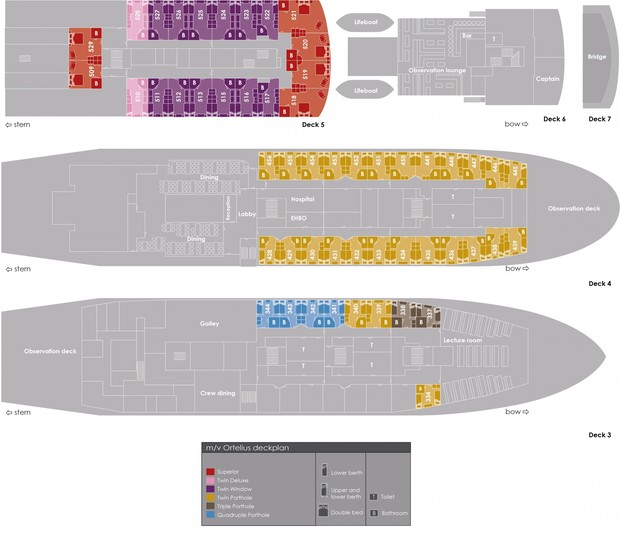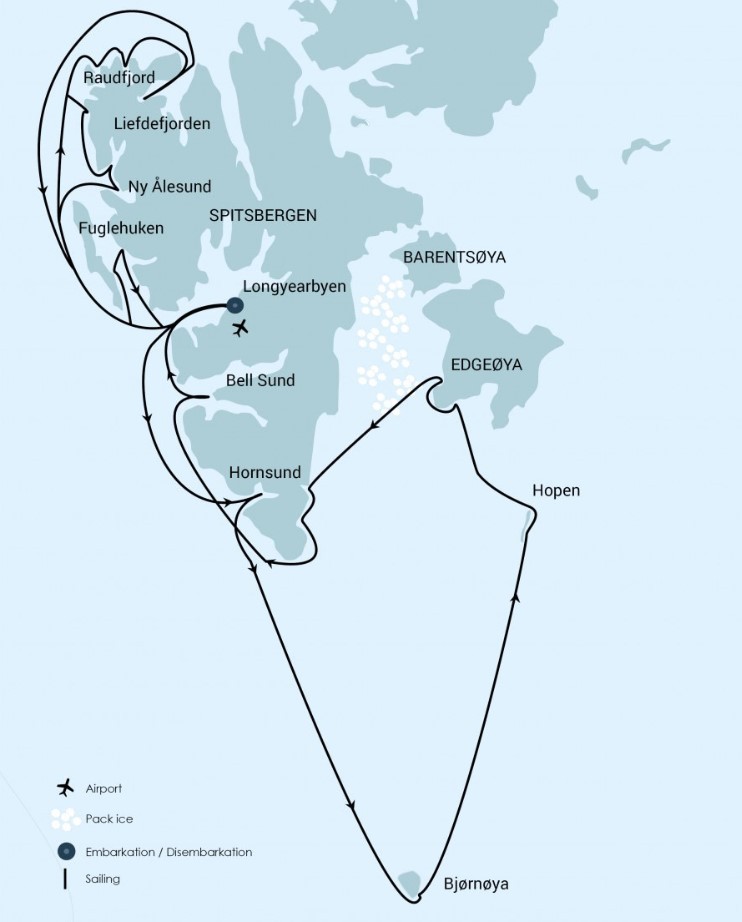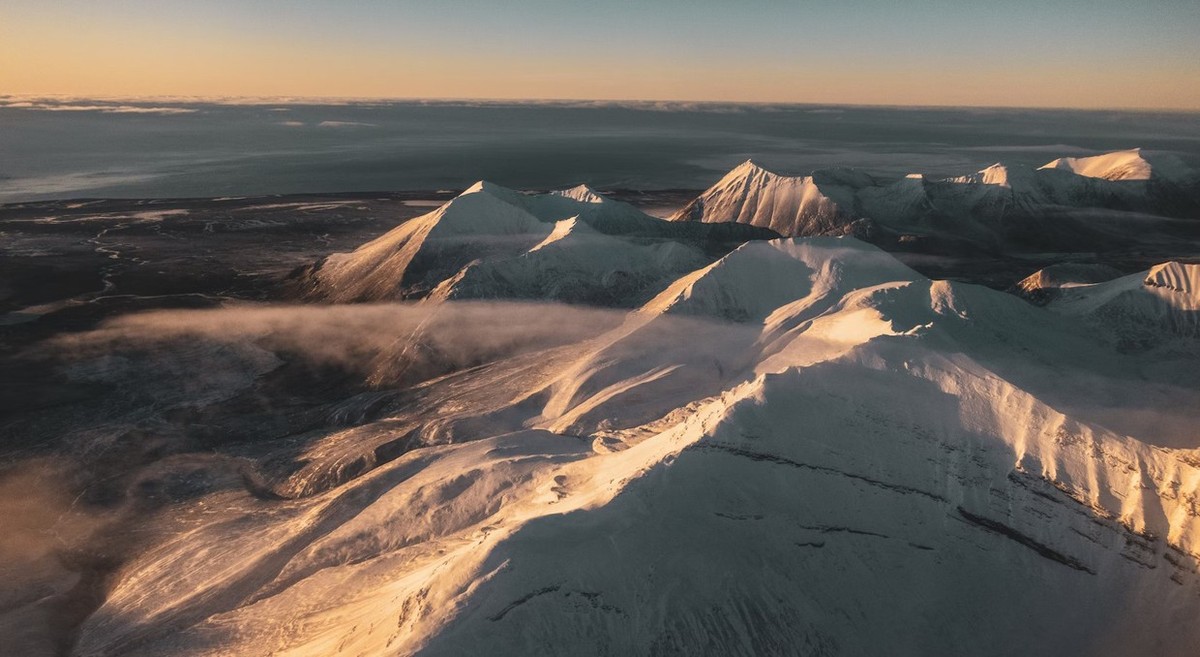
Why take just one polar voyage when you can combine two into an activity-filled, wildlife-focused adventure? We’ve joined our East Spitsbergen cruise (emphasizing polar bears and pack ice) with our North Spitsbergen Basecamp cruise (multiple free activities) to make one epic tour of an incredible Arctic island.
Background on Basecamp cruises: -
Our Basecamp voyages focus on land and near-shore activities with minimal disturbance to local wildlife. If time and conditions permit, the expedition team will also look for wildlife opportunities whenever possible.
By definition, a basecamp is a temporary camp from which expeditions or other outdoor activities can be carried out. During our designated Basecamp cruises, the ship navigates to carefully chosen areas around North Spitsbergen, staying in fewer locations than during our regular trips so that it can serve as a comfortable hub for multiple outdoor activities.
Hikers (H) can embark on vigorous walks in the backcountry, photographers (P) can capture the dramatic surroundings in pictures, and kayakers (K) can explore waterways through which the ship cannot always sail. Passengers who do not wish to engage in these activities can enjoy Zodiac excursions and easy-to-moderate shoreline walks that focus on wildlife.
All activities are free of charge.
Cleaning the shores of Spitsbergen: -
Interested in doing something good for the enviroment?
We welcome you to participate in our ongoing effort to remove plastic waste and other rubbish from the shores of Spitsbergen.
Garbage from the ocean, such as fishing gear and plastic litter, piles up on these shores. This litter is hazardous to the animals, which get entangled in fish nets and sometimes ingest micro-plastics that can lead to starvation and suffocation.
Supported by AECO and the governor of Spitsbergen, we enjoy cleaning the beaches of Svalbard with our passengers. All participants will be assisted by our guides and provided with collection bags. About 50 passengers will clean in the morning while the other 50 have their excursion in another area. Then in the afternoon, the groups switch roles. And if we cannot clean a certain area because of roaming bears or other concerns, we will find an alternate area.
- Photo Workshop
- Snowshoeing
- Kayaking
- Polar Diving
- Basecamp
- Hiking
- Zodiac Cruising & Shore Program
- Cleaning up Svalbard
- Shore-Based Walking
- Kittiwake
- Polar Bear
- Walrus
Prices quoted here are often dependent on currency fluctuations. Please check with (01432 507450 or info@small-cruise-ships.com) for the very latest price, which may well be cheaper than the one advertised here.

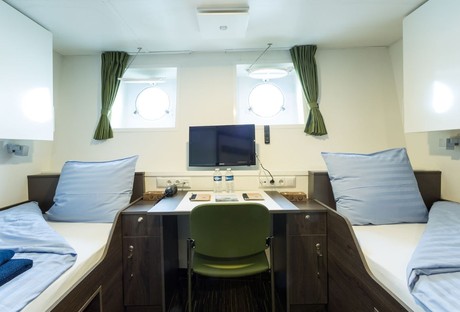
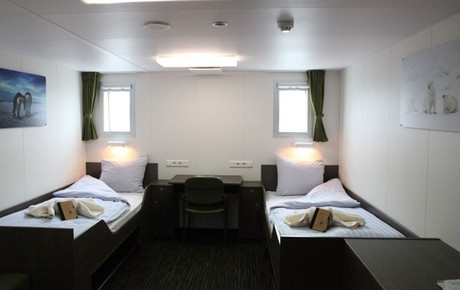

Prices quoted here are often dependent on currency fluctuations. Please check with (01432 507450 or info@small-cruise-ships.com) for the very latest price, which may well be cheaper than the one advertised here.



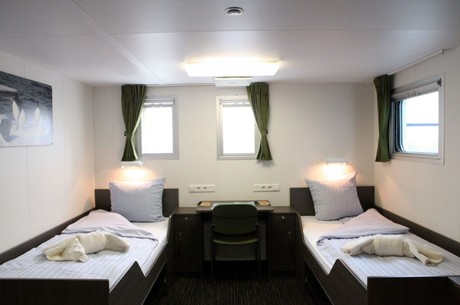

Ortelius
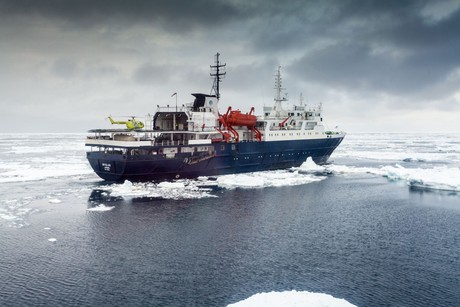
| Length | 91 metres |
|---|
The ice-strengthened vessel “Ortelius” is an excellent vessel for Polar expedition cruises in the Arctic and Antarctica, providing possibilities to adventure remote locations such as the Ross Sea.
The vessel has the highest ice-class notation (UL1 equivalent to 1A) and is therefore very suitable to navigate in solid one-year sea ice and loose multi-year pack ice. “Ortelius” is a great expedition vessel for 100 passengers with lots of open-deck spaces and a very large bridge which is accessible to the passengers. The vessel is manned by 34 highly experienced crew, 15 international catering staff, including stewardesses, 6 expedition staff (1 expedition leader and 5 guides/lecturers) and 1 doctor.
”Ortelius” offers a comfortable hotel standard, with two restaurants, a bar/lecture room and a sauna. Ortelius' voyages are primarily developed to offer our passengers a quality exploratory wildlife program, trying to spend as much time ashore as possible. As the number of passengers is limited to approximately 100 on the “Ortelius”, flexibility assures maximum wildlife opportunities.
Passengers on a typical voyage range from in their 30s to their 80s, with the majority usually between 45 ― 65. Our expeditions attract independent travelers from around the globe who are characterized by a strong interest in exploring remote regions. The camaraderie that develops on board is an important part of the Oceanwide experience, and many passenger groups include several nationalities.
“Ortelius” was built in Gdynia, Poland in 1989, was named “Marina Svetaeva”, and served as a special purpose vessel for the Russian Academy of Science. The vessel is re-flagged and renamed “Ortelius”. Ortelius was a Dutch / Flemish cartographer. Abraham Ortelius (1527 – 1598) published the first modern world atlas, the Theatrum Orbis Terrarum or Theatre of the World in 1570. At that time, the atlas was the most expensive book ever printed.
What to Wear
In keeping with the spirit of expedition, dress on board is informal. Bring casual and comfortable clothing for all activities, and keep in mind that much of the scenery can be appreciated from deck ― which can be slippery. Bring sturdy shoes with no-slip soles, and make sure your parka is never far away in case one of our crew shouts “Whales!” over the loudspeaker and you have to dash outside in a moment’s notice. Opt for layers, as it is comfortably warm aboard the ship though often cold on deck.
Electric Current
The electrical supply aboard ship is 220v, 60Hz. Electrical outlets are standard European with two thick round pins, so some passengers may need a 220v/110v converter.
Tipping
The customary gratuity to the ship’s service personnel is made as a blanket contribution at the end of the voyage and is divided among the crew. Tipping is a personal matter, and the amount you wish to give is at your sole discretion. As a generally accepted guideline, we suggest 8 ― 10 euros per passenger per day. It is better for the crew if you give cash.
Smoking Policy
Ortelius has a non-smoking policy inside, though you can smoke in certain designated areas. We ask that you please respect the wishes of non-smokers and please never throw your cigarette ends overboard or anywhere except the designated bin.
